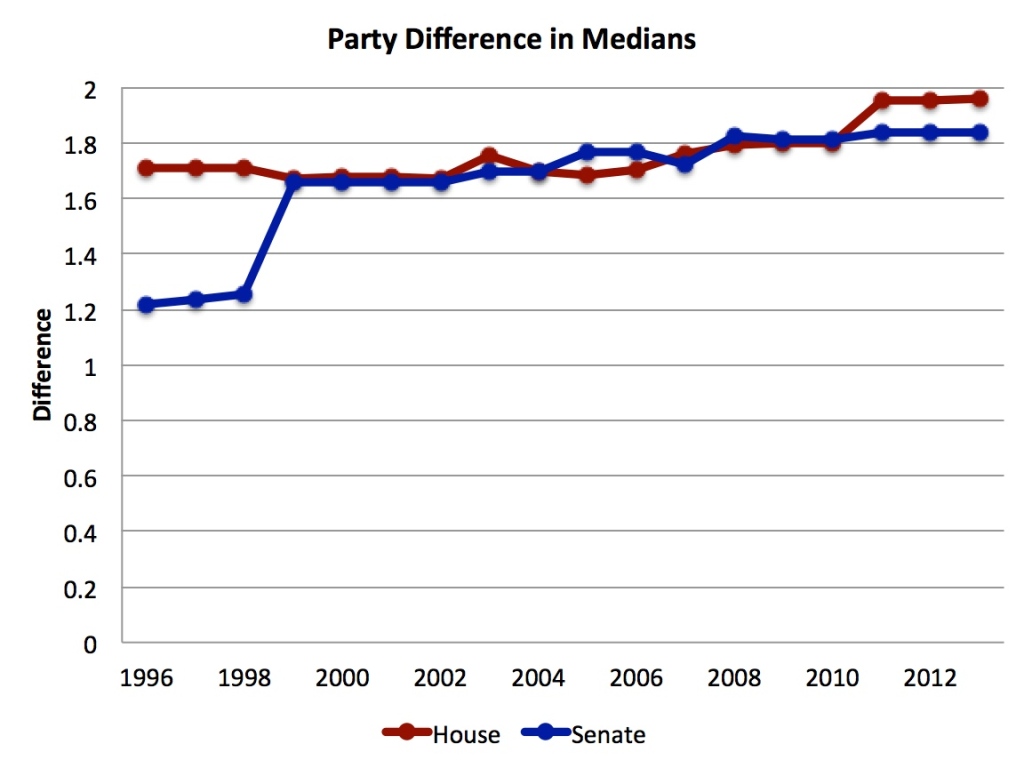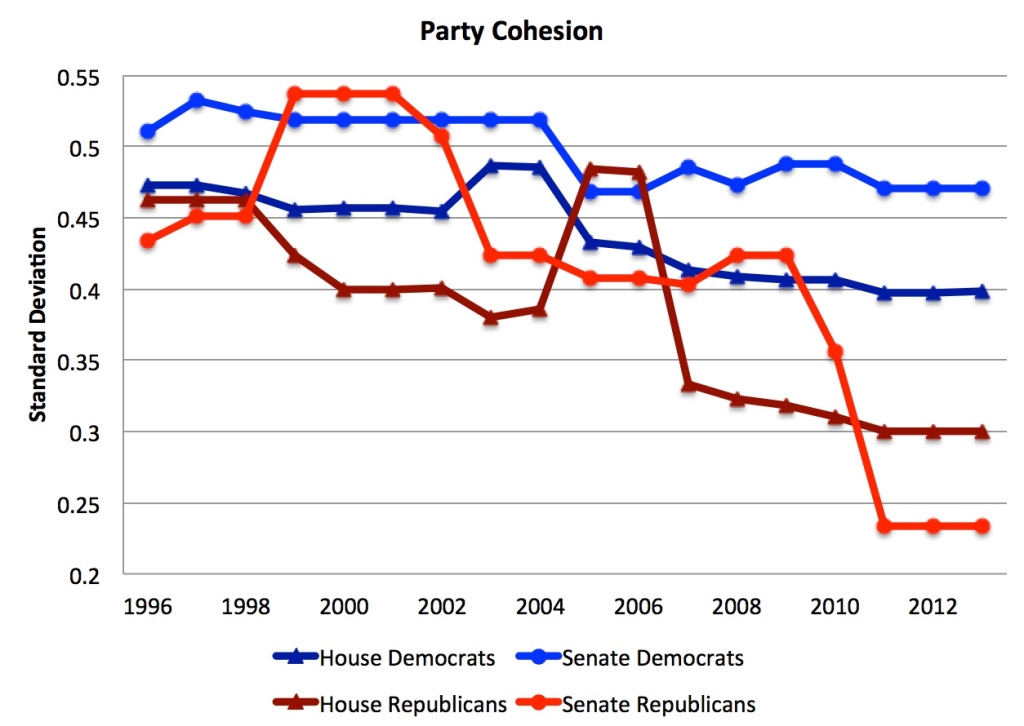Political scientists Boris Shor and Nolan McCarty have developed measures of state legislator ideology similar to the NOMINATE scores presented in yesterday’s post on congressional polarization. The Shor and McCarty scores are considered the best measures of state legislator ideology by political scientists and were developed through spatial modeling techniques that allow comparability both across states and years.
For individual legislators, more positive scores indicate greater conservatism while more negative scores indicate greater liberalism. The scores only range so low and high. A very rough indicator suggests that legislators with scores above 1 are especially conservative and legislators with scores below -1 are particularly liberal. Moderate legislators receive scores closer to zero.
In both the House of Delegates and the Senate, differences between the median Republican and median Democrats in each chamber have widened over time , as the figure below shows. (If there were no difference in the ideology of each member, the difference measure would equal zero.)
Since 1996, partisan differences in the House of Delegates have increased from 1.71 to 1.96–a gain of 15%. The Senate started with lower polarization but has now almost caught up as differences rose from 1.22 to 1.84–a gain of 51%.
The rise in polarization is not due entirely to changes in the ideology of just Republicans or just Democrats. Republicans have become more conservative while Democrats have moved to the left. The median House Democrat is now 13% more liberal than in 1996 and the median House Republican is 17% more conservative.
The same process has occurred in the Senate, though Republicans have lurched more to the right than Democrats have to the left. The biggest change occurred after the 1998 elections when several moderate Republicans were replaced by more conservative members of their party.
Since 1996, Democratic liberalism has risen by 16%–a comparable change to that in the House–but Republican conservatism has shot up by 264%. This change is less drastic than it sounds. Senate Republicans in 2013 were still a tad less conservative than their counterparts in the House.
The party caucuses have not just become more ideologically different. They have also become more cohesive. The following figure shows the standard deviation in the Shor-McCarty scores for each year and party in both houses:
The decline in the standard deviation means that there is less variation around the average score for each party. In other words, Republicans are not just more conservative, they are also more cohesively conservative. The same is true for Democrats. But Democrats were much less cohesive than Republicans in 2013, reflecting that more moderate Democrats had survived than moderate Republicans.
Next up: the likely impact of the 2014 elections.




